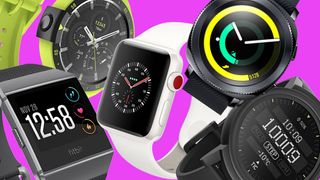Move over, smartphones - Wearables segment set to see lot more action
Newer platforms, more functionalities

If the last 15 years or so saw frenetic action and research in the smartphones segment, in the immediate future it would be the smart wearables sector that will be under focus. It is not as if smartphones won't see innovations and breakthrough features, but it is apparent that there is a slight tapering off in terms of landmark advancements in the last few years. This is in the nature of any product evolution.
On the other hand, smart wearables segment will witness more excitement and more investments. Analysts feel that the segment will also expand "from consumer to enterprise, from mainstream to kids and senior smartwatches, from sports to fitness and wellness wearables."
Smaller, thinner, sleeker smartwatches and wearables are on the anvil, even as the industry is working on responsive apps, faster performance, and endless capabilities. 3D watch faces, rich real-time maps, and even two-way video calls are some of the innovations that would get mainstreamed soon.
As there is now more demand for richer functionality and preserving battery life, stakeholders like Qualcomm are coming up with fresh platforms. Qualcomm has unveiled new Snapdragon W5 Gen 1 and W5 Plus Gen 1 chipsets yesterday.
Smart wearables could be your 'first doctor'

It is said that smart wearables, going forward, would be more sleek and come with novel design factor. Like it happened with smartphones, more purpose-built platforms will arrive with the promise of improved performance and higher battery life. Also, the general consensus in the industry is that within the smart wearables segment, the wellness and fitness category will witness a lot of action. There is already a big demand to track health data accurately and at lower power. Smart wearables could soon become your 'first doctor' in emergency situations. They would be able to not only record more accurately your health parameters but also be precise enough to be acceptable to the medical community. The virtually always-sensing modes make it possible to make smart wearables a bankable fitness, wellness, and health tool rather than just be a gimmicky gizmo.
Segments such as kid and senior wearables require 4G LTE connectivity, and will see camera-based use cases in increasingly smaller IDs with extended battery life. Smart wearables would also have richer and brighter watch faces, notifications on-the-go, and music on the run. The industry is also working closely with experts in sensors, UX (user experience), camera, NFC (near-field communication), audio/speech, and software spaces. So you can expect a lot of improvements on this front, too. All in all, a good time to buy new smartwatches as they come packed with novel features that are practical, and even life-saving.
- Amazon Prime Day 2022 India smartphone launches: The phones to watch out for
Get daily insight, inspiration and deals in your inbox
Get the hottest deals available in your inbox plus news, reviews, opinion, analysis and more from the TechRadar team.

Over three decades as a journalist covering current affairs, politics, sports and now technology. Former Editor of News Today, writer of humour columns across publications and a hardcore cricket and cinema enthusiast. He writes about technology trends and suggest movies and shows to watch on OTT platforms.
Most Popular



